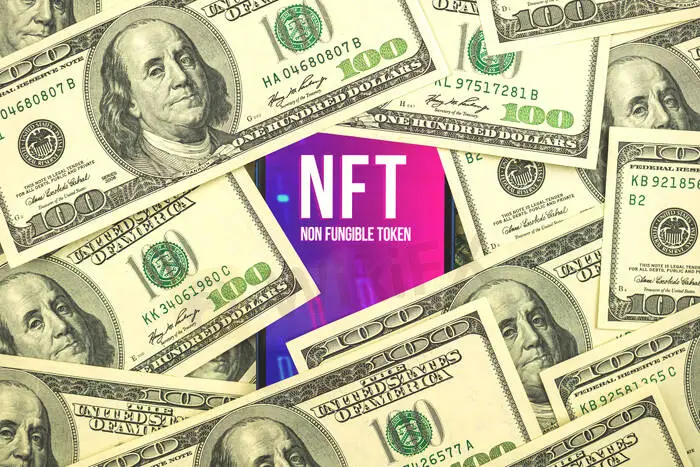简体中文
繁體中文
English
Pусский
日本語
ภาษาไทย
Tiếng Việt
Bahasa Indonesia
Español
हिन्दी
Filippiiniläinen
Français
Deutsch
Português
Türkçe
한국어
العربية
Art NFTs Pop Up on the U.S Treasury Radar
Abstract:Following increased NFT scrutiny in the UK, India, and China, the U.S Treasury raised concerns over money laundering within the NFT space.

Illicit activity on the NFT marketplace has been on the rise at the turn of the year. A surge in trading volumes to record highs has attracted bad actors into the space.
Illicit Activity Puts NFTs on Watch
Early last week, we reported on NFT marketplace HitPiece selling music NFTs without the knowledge of the artists. To make matters worse, HitPiece also reportedly created NFTs of music without the consent of artists. HitPiece founders had created the marketplace to support music artists and provide a platform through which artists could receive royalties.
HitPiece is not the only market place, however, that has drawn criticism. Overnight on Thursday, Nike reportedly filed a claim against online reseller StockX for trademark infringement. StockX has been selling Nike sneaker NFTs since January. At the time of writing, a sneaker collection titled “The Vault” had 8 Nike Vault NFTs on sale and 1 Adidas NFT. Nike filed the lawsuit as it prepares to launch its own NFT sneaker collection after having bought virtual sneaker maker RTFKT late last year.
With NFT marketplaces such as OpenSea also seeing a spike in illegal activity, governments and regulators have started looking beyond Bitcoin mining and crypto taxation.
Regulators Take a Closer Look at NFTs
In January, the Indian government set up a FINTEC division to monitor cryptos, crypto launches, and NFTs. The move followed calls by the Bank of England for a global crypto regulatory framework, which was echoed by the IMF.
With the China‘s central bank, the People’s Bank of China, having also raised concerns over NTFs, UK government MPs recently called out for greater regulatory scrutiny.
The U.S government was not far behind, with the White House announcing the imminent release of an Executive Action. According to the announcement, agencies will need to take a closer look at cryptos, crypto mining, and NFTs. In the interest of national security, the order will reportedly call on agencies to work closely with regulators around the world. Such a move could form a blueprint of a global crypto regulatory framework.
U.S Treasury Talks NFTs
While the crypto market awaits the White House Executive Action, the U.S Treasury issued a press release on NFTs and art theft going into the weekend.
Salient points from the press release included:
“We look at what else might be needed to address money laundering risks specific to other industries”. Other industries included the art industry.
Platforms with high annual sales turnover and frequent trading in high-value art present a higher risk of money laundering.
“NFTs may present new risks, depending on the structure and market incentives”.
The Treasury recommended the following regulatory and non-regulatory options:
Encourage private sector information-sharing programs to create a more transparent arts market.
Train law and customs enforcement and asset recovery agencies with updated guidance.
FinCEN recordkeeping authorities to support information assimilation and improved due diligence.
Apply AML/CFT requirements to art market participants and / or obligate them to create and maintain AML/CFT.
Considering the U.S Treasuries recommendations, a regulatory framework and the implementation of AML/CFT requirements by NFT marketplaces could not only reduce the risk of money laundering but also illicit activity that continues to plague the NFT marketplace.

Disclaimer:
The views in this article only represent the author's personal views, and do not constitute investment advice on this platform. This platform does not guarantee the accuracy, completeness and timeliness of the information in the article, and will not be liable for any loss caused by the use of or reliance on the information in the article.
Read more

Will the Euro and US Dollar Reach Parity in 2025?
Euro-dollar parity sparks debate again as 2025 approaches, with multiple factors shaping the exchange rate outlook.

US Dollar Surge Dominates Forex Market
The global forex market continues to show volatility, with the U.S. dollar fluctuating last week but overall maintaining a strong upward trend. How long can this momentum last?

Oil Prices Soar for 5 Days: How Long Will It Last?
Last week, the global oil market saw a strong performance, with Brent crude and WTI crude prices rising by 2.4% and around 5% respectively. Oil prices have now posted five consecutive days of gains. But how long can this rally last?

How Big is the Impact of the USD-JPY Rate Gap on the Yen?
The U.S. Federal Reserve's repeated rate cuts and the narrowing of the U.S.-Japan interest rate differential are now in sight. So, why is the U.S.-Japan interest rate differential so important for the yen’s safe-haven appeal, especially when global economic uncertainty rises?
WikiFX Broker
Latest News
SQUARED FINANCIAL: Your Friend or Foe?
Big News! UK 30-Year Bond Yields Soar to 25-Year High!
High-Potential Investments: Top 10 Stocks to Watch in 2025
Why Is Nvidia Making Headlines Everywhere Today?
Discover How Your Trading Personality Shapes Success
US Dollar Insights: Key FX Trends You Need to Know
FINRA Charges UBS $1.1 Million for a Decade of False Trade Confirmations
BI Apprehends Japanese Scam Leader in Manila
Bitcoin in 2025: The Opportunities and Challenges Ahead
Join the Event & Level Up Your Forex Journey
Currency Calculator






